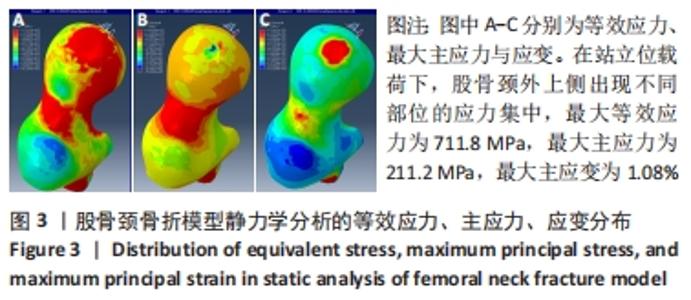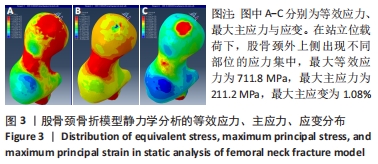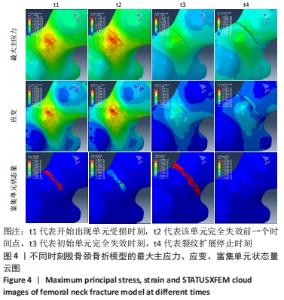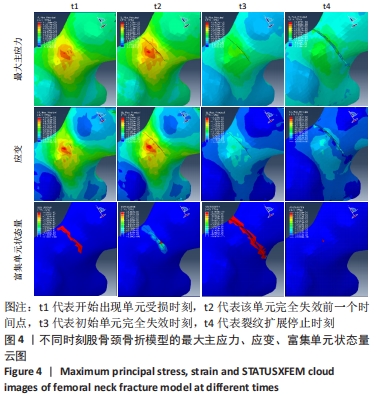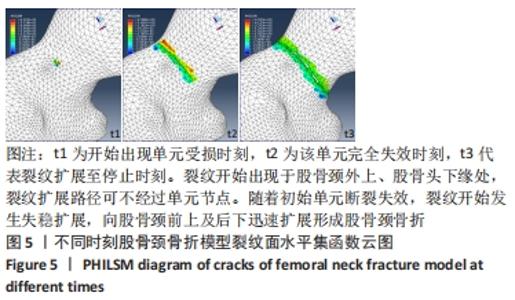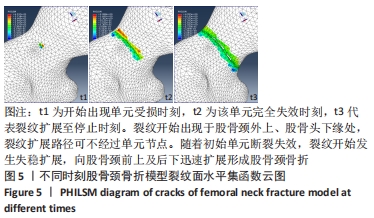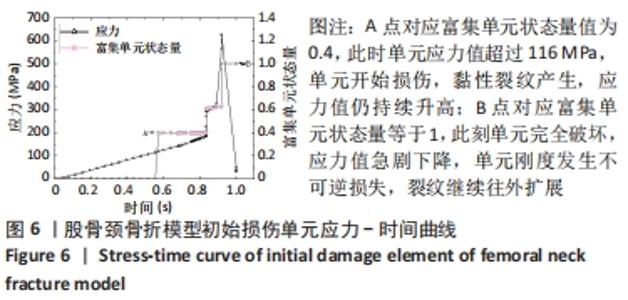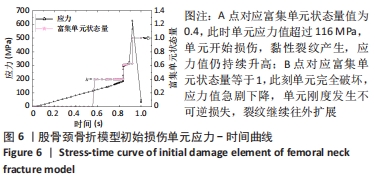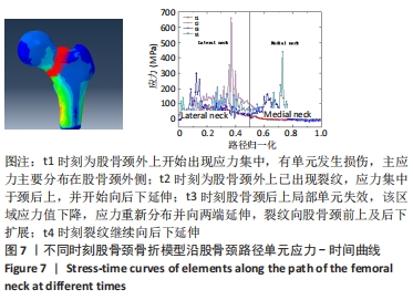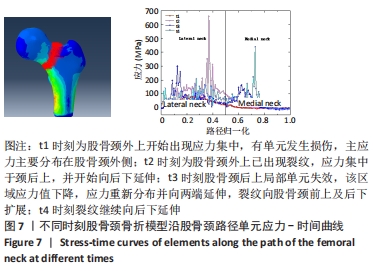[1] 原发性骨质疏松症诊疗指南(2017)[J].临床医学研究与实践,2017,2(31):201.
[2] 罗令,孙晓峰,皮丕喆,等.近10年来我国中老年人群骨质疏松症患病率的荟萃分析[J].中国骨质疏松杂志,2018,24(11):1415-1420.
[3] JKARRES J, KIEVIET N, EERENBERG JP, et al. Predicting Early Mortality After Hip Fracture Surgery: The Hip Fracture Estimator of Mortality Amsterdam. Orthop Trauma. 2018;32(1):27-33.
[4] ASPRAY TJ. Fragility fracture: recent developments in risk assessment. Ther Adv Musculoskelet Dis. 2015;7(1):17-25.
[5] ENGELKE K, VAN RIETBERGEN B, ZYSSET P. FEA to Measure Bone Strength: A Review. Clin Rev Bone Miner Metab. 2016;14:26-27.
[6] ENGELKE K, LIBANATI C, FUERST T, et al. Advanced CT based In Vivo Methods for the Assessment of Bone Density, Structure, and Strength. Curr Osteoporos Rep. 2013;11(3):246-255.
[7] MARCO M, GINER E, LARRAÍNZAR-GARIJO R, et al. Numerical Modelling of Femur Fracture and Experimental Validation Using Bone Simulant. Ann Biomed Eng. 2017;45(10):2395-2408.
[8] RIDHA H, THURNER PJ. Finite element prediction with experimental validation of damage distribution in single trabeculae during three-point bending tests. J Mech Behav Biomed Mater. 2013;27:94-106.
[9] 郑利钦,林梓凌,何祥鑫,等.动态载荷下股骨转子间区域皮质骨厚度对骨折类型影响的有限元分析[J].医学研究生学报,2018,31(10):1043-1046.
[10] URAL A. Advanced Modeling Methods—Applications to Bone Fracture Mechanics. Curr Osteoporos Rep. 2020;18(5):568-576.
[11] SABET FA, NAJAFI AR , HAMED E, et al. Modelling of bone fracture and strength at different length scales: A review. Interface Focus. 2016;6(1):20150055.
[12] CRISTOFOLINI L, SCHILEO E, JUSZCZYK M, et al. Mechanical testing of bones: the positive synergy of finite-element models and in vitro experiments. Philos Trans A Math Phys Eng Sci. 2010;368(1920):2725-2763.
[13] 郑利钦,林梓凌,李鹏飞,等.动态载荷下松质骨对骨质疏松性股骨颈骨折断裂力学影响的有限元分析[J].中国组织工程研究,2019,23(12):1887-1892.
[14] 李鹏飞,杜根发,林梓凌,等.基于LS-DYNA模拟老年股骨颈骨折的有限元分析[J].中国组织工程研究,2016,20(44):6606-6611.
[15] ALI AA, CRISTOFOLINI L, SCHILEO E, et al. Specimen-specific modeling of hip fracture pattern and repair. J Biomech. 2014;47(2):536-543.
[16] ALI B, ABDELKADER B, NOUREDDINE B, et al. Numerical analysis of crack propagation in cement PMMA: application of SED approach. Struct Eng Mech. 2015;55(1):93-109.
[17] MISCHINSKI S, URAL A. Interaction of microstructure and microcrack growth in cortical bone: a finite element study. Comput Methods Biomech Biomed Engin. 2013;16(1):81-94.
[18] LAUNEY ME, BUEHLER MJ, RITCHIE RO. On the Mechanistic Origins of Toughness in Bone. Ann Rev Mater Res. 2010;40(1):25-53.
[19] LICATA A. Bone density vs bone quality: what’s a clinician to do? Cleve Clin J Med. 2009;76(6):331-336.
[20] YENI YN, BROWN CU, NORMAN TL. Influence of bone composition and apparent density on fracture toughness of the human femur and tibia. Bone. 1998;22(1): 79-84.
[21] MCCALDEN RW, MCGEOUGH JA, BARKER MB, et al. Age-related changes in the tensile properties of cortical bone. The relative importance of changes in porosity, mineralization, and microstructure. J Bone Joint Surg Am. 1993;75(8):1193-1205.
[22] 王益莲,李春雯,郑婷婷,等.应用有限元分析骨质疏松性髋部骨折的研究进展[J].中国骨质疏松杂志,2011,17(3):264-267.
[23] NALLA RK, KRUZIC JJ, KINNEY JH, et al. Effect of aging on the toughness of human cortical bone: evaluation by R-curves. Bone. 2004;35(6):1240-1246.
[24] BONFIELD W, BEHIRI JC, CULLEN B. Orientation and age-related dependence of the fracture toughness of cortical bone. J Biomech. 1985;18(7):521-522.
[25] 陈振沅.股骨转子部骨折六部分骨折分型产生机制的有限元分析[D].遵义:遵义医学院,2015.
[26] BUDYN E, HOC T, JONVAUX J. Fracture strength assessment and aging signs detection in human cortical bone using an X-FEM multiple scale approach. Comput Mech. 2008;42(4):579-591.
[27] TOMAR V. Insights into the effects of tensile and compressive loadings on microstructure dependent fracture of trabecular bone. Eng Fract Mech. 2009; 76(7):884-897.
[28] TOMAR V. Modeling of dynamic fracture and damage in two-dimensional trabecular bone microstructures using the cohesive finite element method. J Biomech Eng. 2008;130(2):021021.
[29] 康颖安.断裂力学的发展与研究现状[J].湖南工程学院学报(自然科学版), 2006(1):39-42.
[30] MISCHINSKI S, URAL A. Finite Element Modeling of Microcrack Growth in Cortical Bone. J Appl Mechan. 2011;78(4):925-948.
[31] GUSTAFSSON A, KHAYYERI H, WALLIN M, et al. An interface damage model that captures crack propagation at the microscale in cortical bone using XFEM. J Mech Behav Biomed Mater. 2019;90:556-565.
[32] GUSTAFSSON A, WALLIN M, KHAYYERI H, et al. Crack propagation in cortical bone is affected by the characteristics of the cement line: a parameter study using an XFEM interface damage model. Biomech Model Mechanobiol. 2019;18(4):1247-1261.
[33] FAN R, HE G, ZHANG X, et al. Modeling the Mechanical Consequences of Age-Related Trabecular Bone Loss by XFEM Simulation. Comput Math Methods Med. 2016;2016:3495152.
[34] CHALHOUB D, ORWOLL ES, CAWTHON PM, et al. Areal and volumetric bone mineral density and risk of multiple types of fracture in older men. Bone. 2016; 92:100-106.
[35] STAUBER M, MÜLLER R. Age-related changes in trabecular bone microstructures: global and local morphometry. Osteoporos Int. 2006;17(4):616-626.
[36] DEMIRTAS A, URAL A. Material heterogeneity, microstructure, and microcracks demonstrate differential influence on crack initiation and propagation in cortical bone. Biomech Model Mechanobiol. 2018;17(5):1415-1428.
[37] DEMIRTAS A, RAJAPAKSE CS, URAL A. Assessment of the multifactorial causes of atypical femoral fractures using a novel multiscale finite element approach. Bone. 2020;135:115318.
[38] FISH J, HU N. Multiscale modeling of femur fracture. Int J Numer Methods Eng. 2016;111(1). doi.org/10.1002/nme.5450
[39] HOFFSETH K, RANDALL C, CHANDRASEKAR S, et al. Analyzing the effect of hydration on the wedge indentation fracture behavior of cortical bone. J Mech Behav Biomed Mater. 2017;69:318-326.
|
